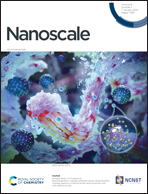Structure design mechanisms and inflammatory disease applications of nanozymes
Abstract
Nanozymes are artificial enzymes with high catalytic activity, low cost, and good biocompatibility, and have received ever-increasing attention in recent years. Various inorganic and organic nanoparticles have been found to exhibit enzyme-like activities and are used as nanozymes for diverse biomedical applications ranging from tumor imaging and therapeutics to detection. However, their further clinical applications are hindered by the potential toxicity and long-term retention of nanomaterials in vivo. Clarifying the catalytic mechanism of nanozymes and identifying the key factors responsible for their behavior can guide the design of nanozyme structure, enlighten the ways to improve their enzyme-like activities, and minimize the dosage of nanozymes, leading to reduced toxicity to the human body for a real biomedical application prospect. In particular, inflammation occurring in numerous diseases is closely related to reactive oxygen species, and the active oxygen scavenging ability of nanozymes potentially exerts excellent therapeutic effects on inflammatory diseases. In this review, we systematically summarize the structure–activity relationship of nanozymes, including regulation strategies for size and morphology, surface structure, and composition. Based on the structure–activity mechanisms, a series of chemically designed nanozymes developed to target various inflammatory diseases are briefly summarized.

- This article is part of the themed collections: Recent Review Articles and 2023 Nanoscale HOT Article Collection


 Please wait while we load your content...
Please wait while we load your content...